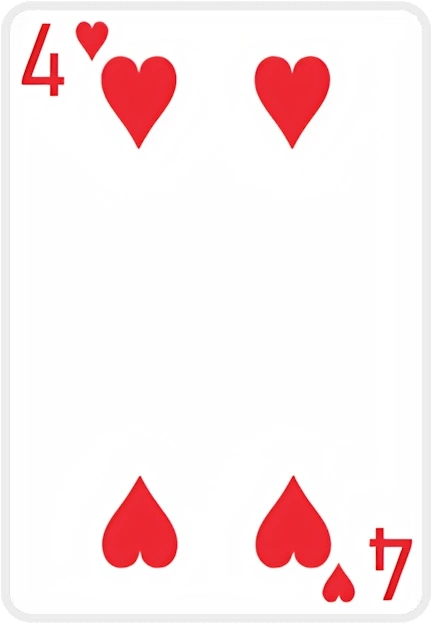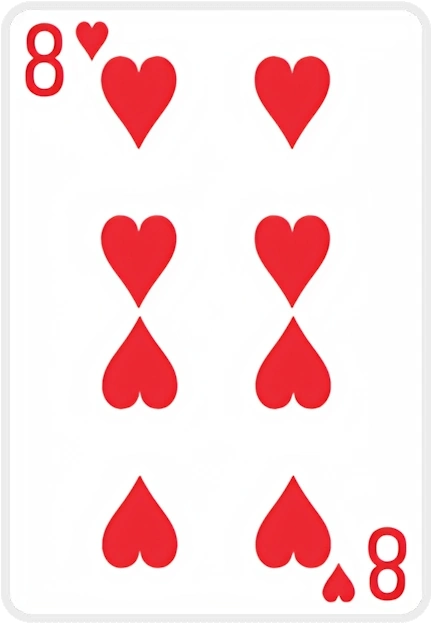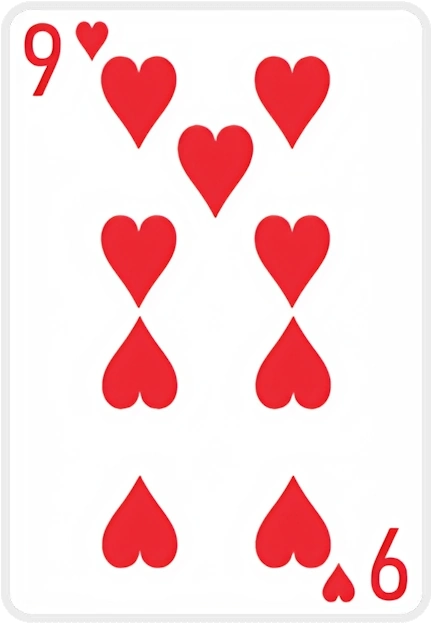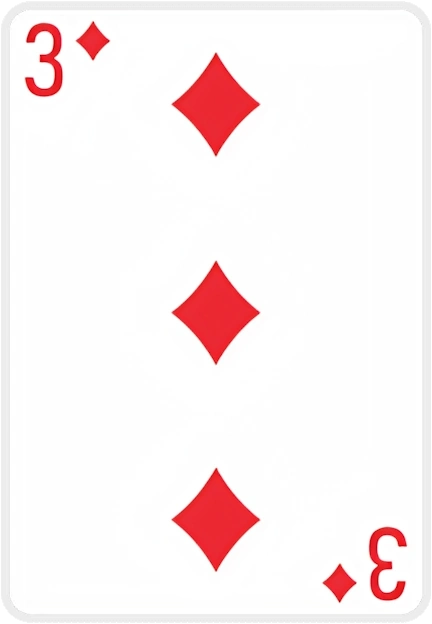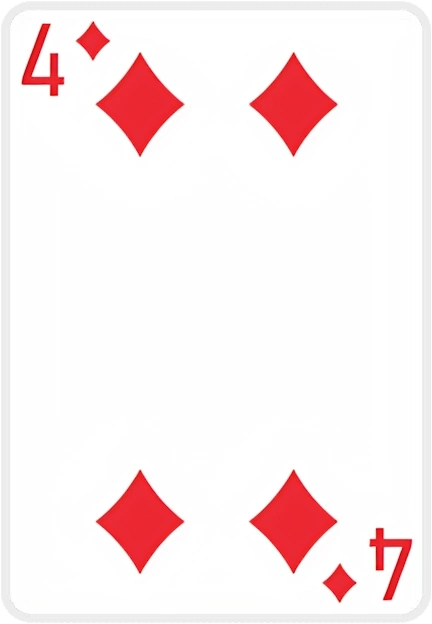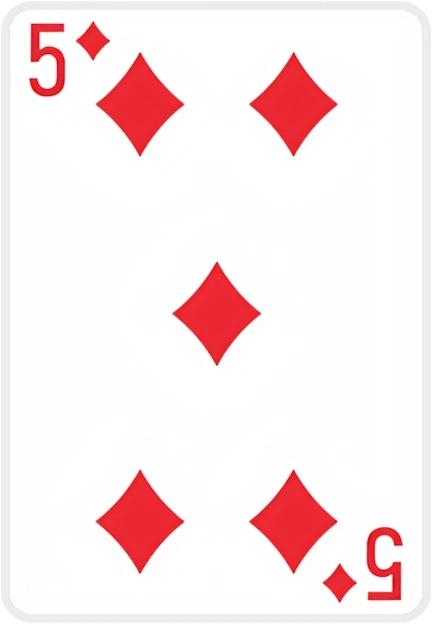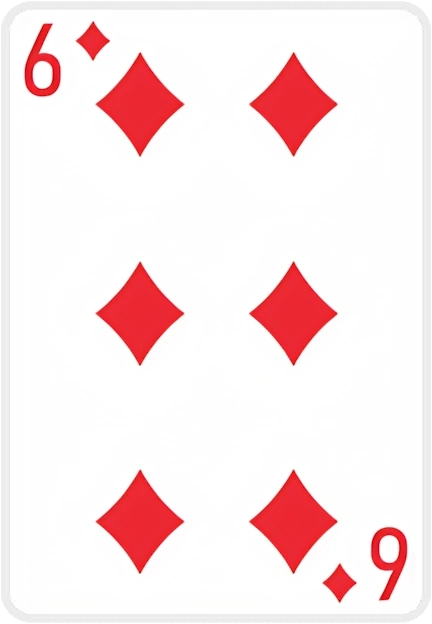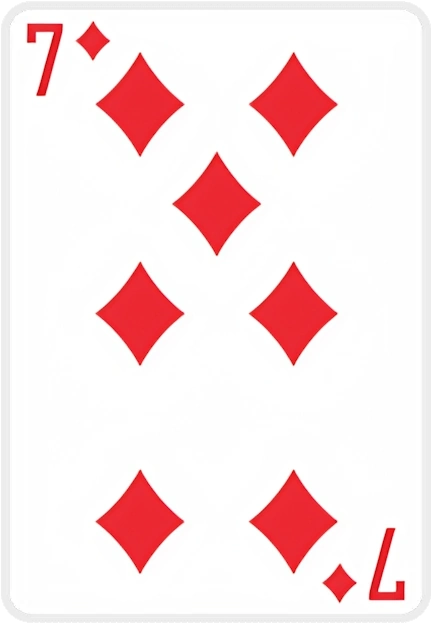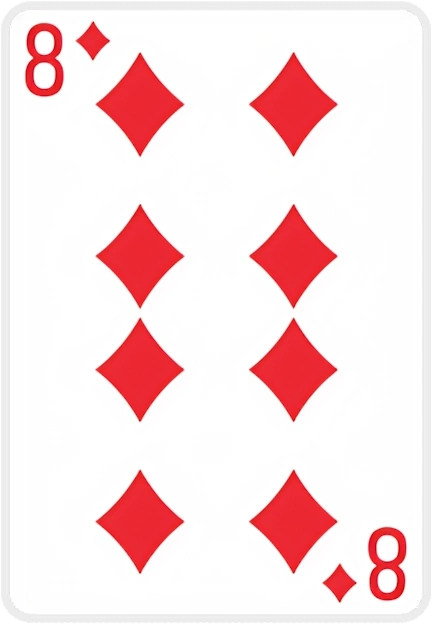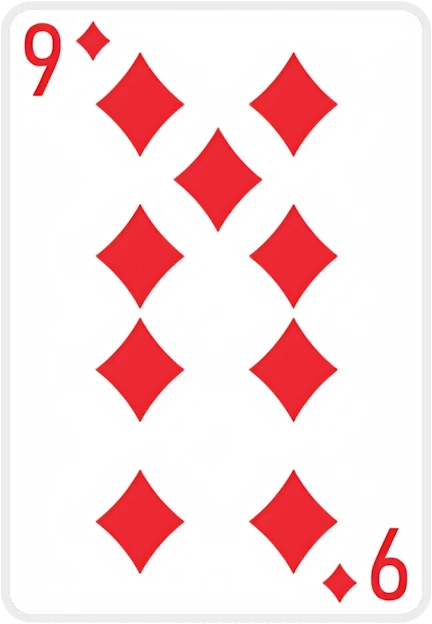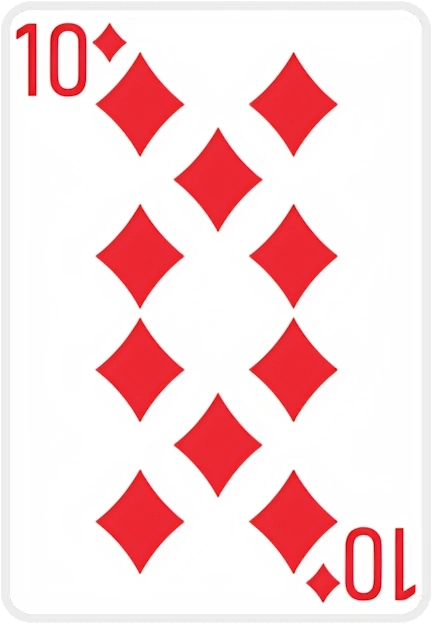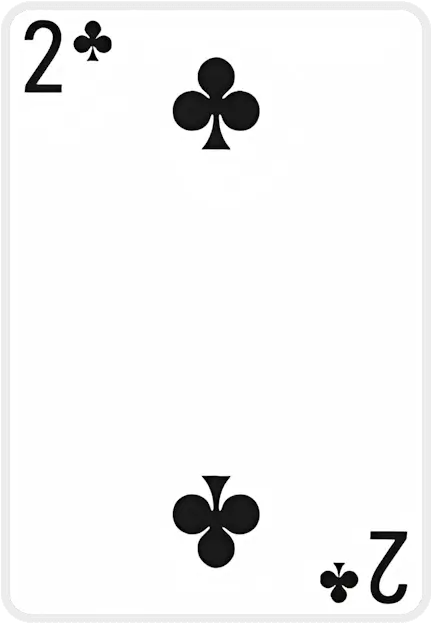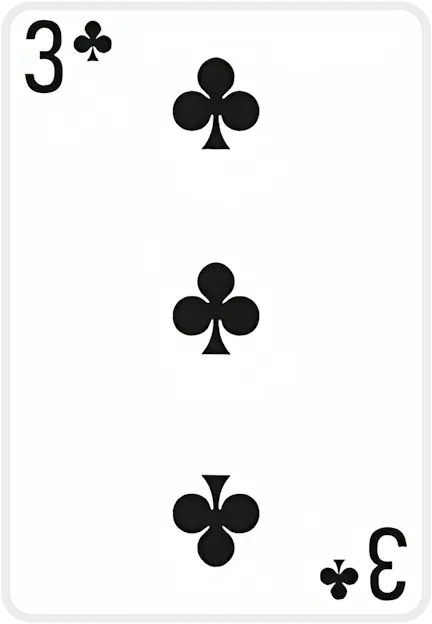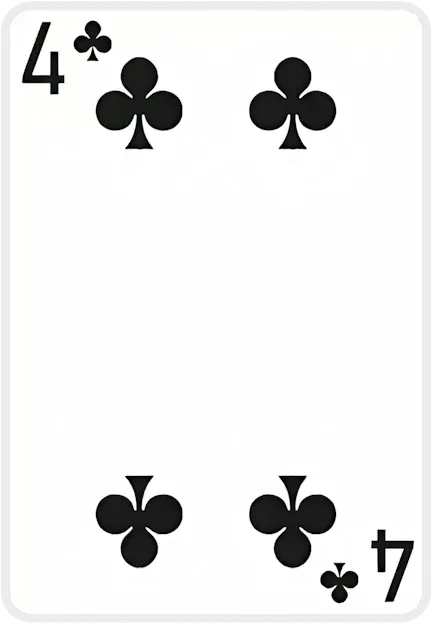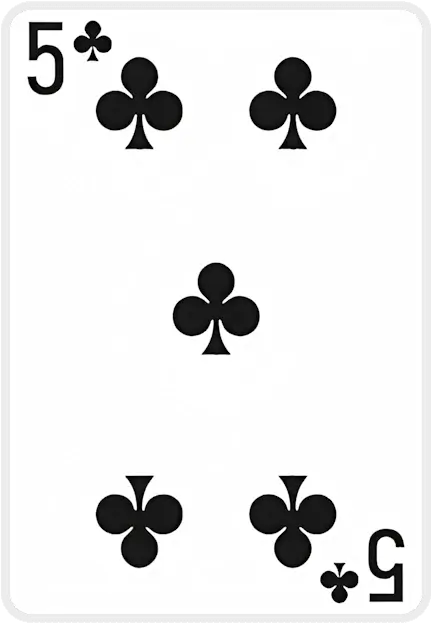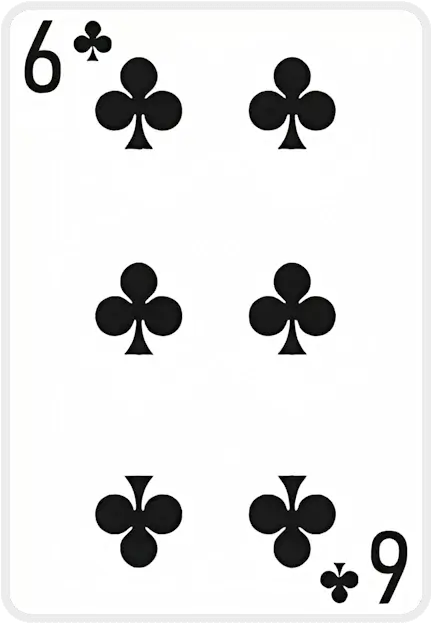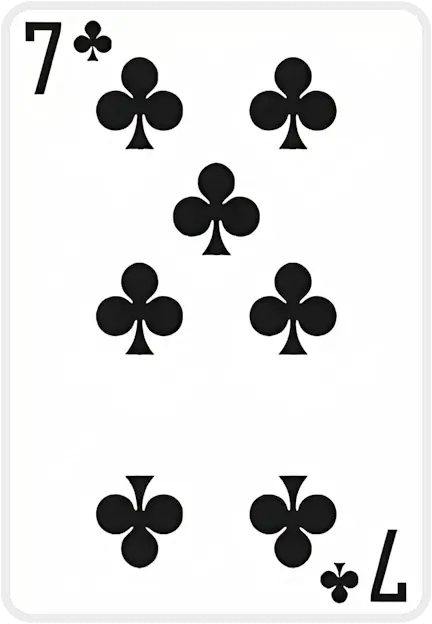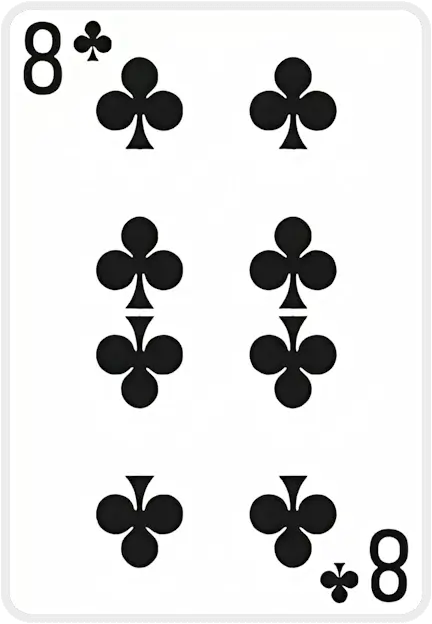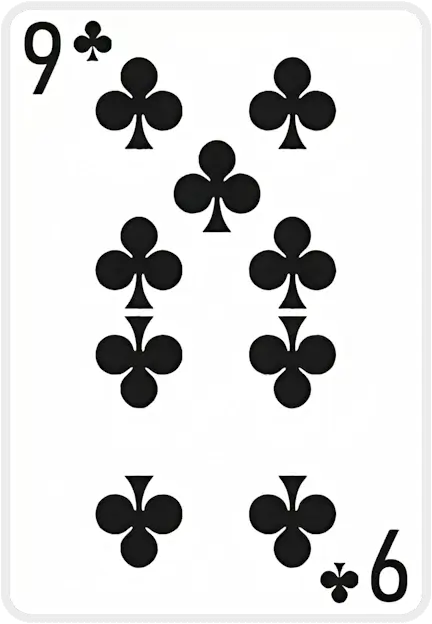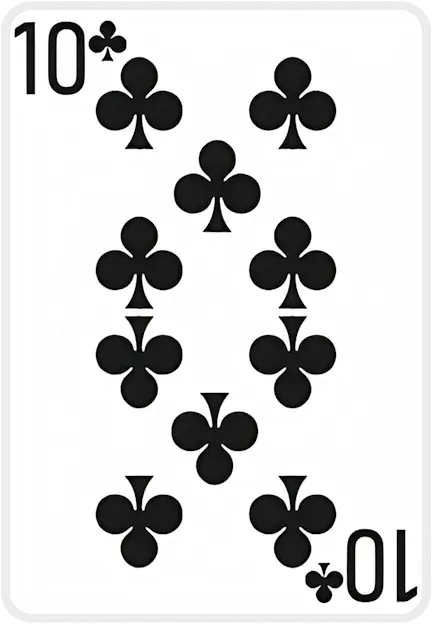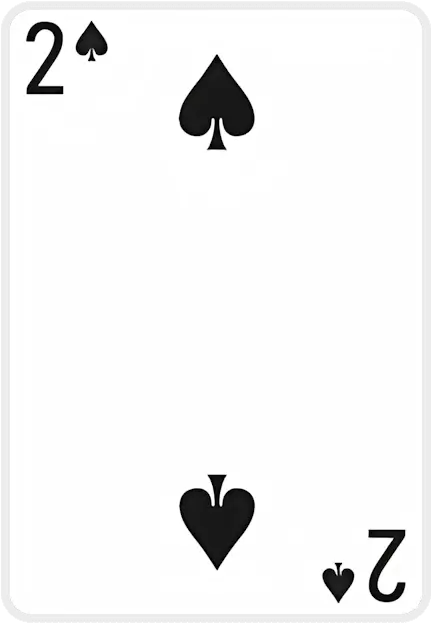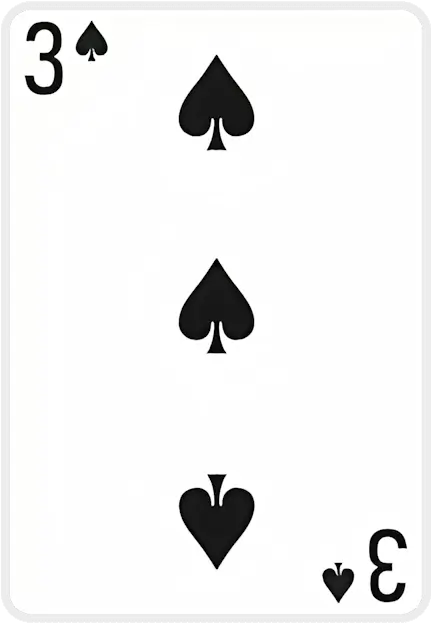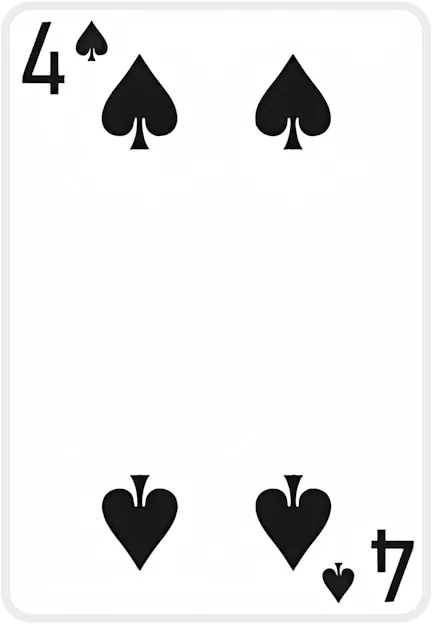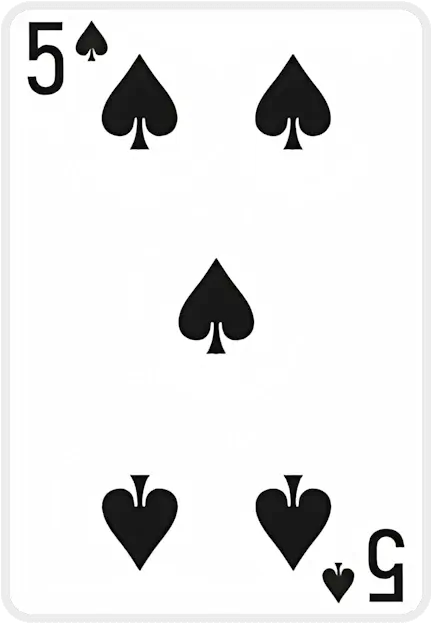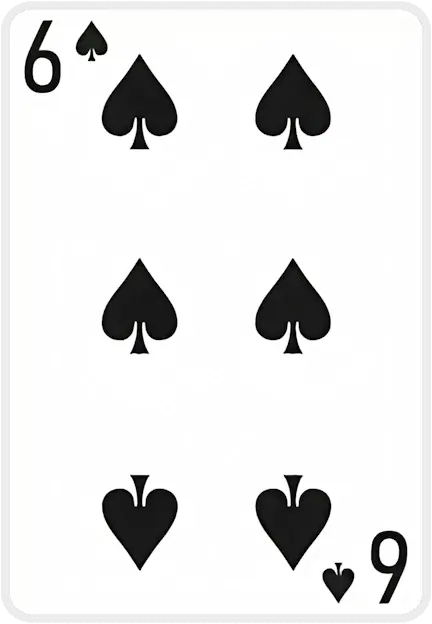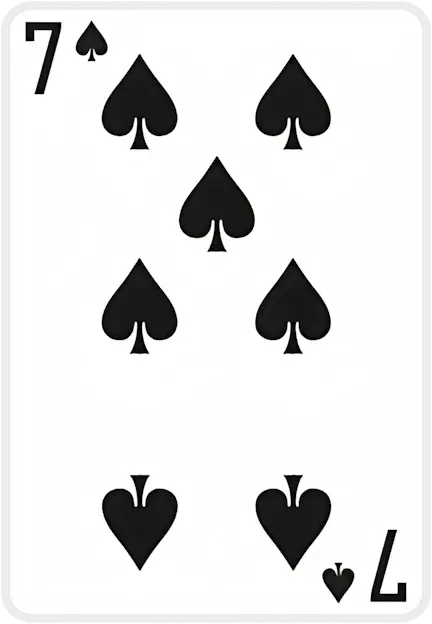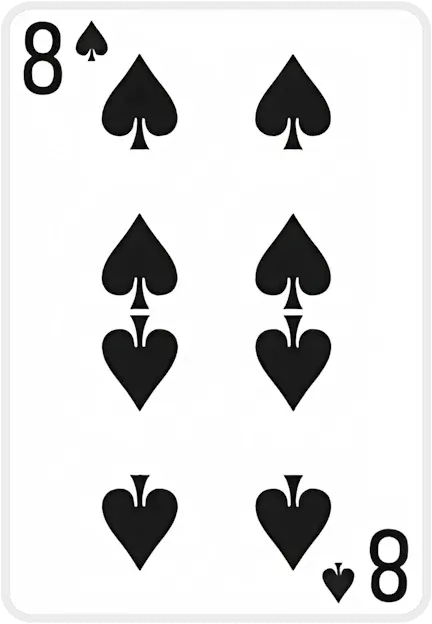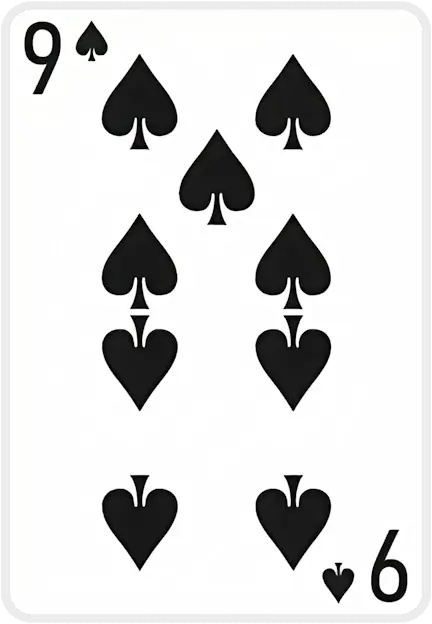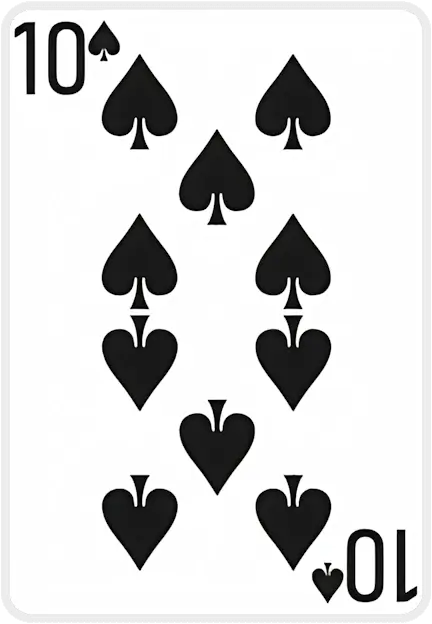Cannot drop, your card needs to be of an opposite suit colour
Cannot drop, your card needs to be one rank lower
Cannot move multiple cards to foundation
Card suit doesn't match foundation pile suit
Card can only be dropped on top of a card pile
Cannot deal cards when there are empty tableau piles
You can only move {0} card(s) at a time based on the current free cells and tableau
The cards don't add up to 13 and cannot be moved
The card is inaccessible and move cannot be performed
Cards must be in sequential order (one higher or lower)
Spiderette Two Suit Solitaire

Spiderette Solitaire Two Suits – A Competitive Solitaire Challenge
🎯 Introduction
Spiderette Solitaire initial layout: a seven-column tableau set up with two suits in play, offering a compact yet challenging one-deck game. Spiderette Solitaire Two Suits is a fast-paced variant of Spider Solitaire designed for players seeking a competitive edge. This two-suit solitaire game uses one deck of cards but only two suits (typically hearts and spades), doubling each card to maintain 52 cards. The result is an intermediate-difficulty experience – easier than the four-suit version, but more challenging than a one-suit game. Competitive solitaire players are drawn to Spiderette Two Suits for its blend of strategic depth and brisk play; games are quicker to complete than classic Spider Solitaire, yet every deal presents a serious challenge (only about 5–10% of Spiderette deals are winnable on average). If you’re aiming to play Spiderette online to test your skills, this two-suit variant delivers a perfect balance of difficulty and excitement for high-level play.
Whether you’re chasing a top score or the fastest completion time, Spiderette Solitaire Two Suits offers an addictive test of skill and strategy. Every move counts – one poorly placed card can block your progress, while a clever sequence can clear half the tableau. The competitive appeal lies in mastering these nuances under pressure. With practice, you’ll find yourself devising sophisticated tactics, planning multiple moves ahead, and savoring the satisfaction of completing a particularly tough deal. solitairex.io further amplifies this competitive spirit by providing stats and leaderboards, so you can measure your performance against other players and continually push for new personal bests.
🕹️ How to Play
Follow these clear steps to learn the gameplay mechanics of Spiderette Solitaire (Two Suits):
- Objective: Remove all the cards by building four in-suit sequences from King down to Ace on the tableau. Once a full sequence (King through Ace of the same suit) is assembled, it will be automatically moved to a foundation pile. Build and clear all such sequences (there will be four in total with one deck) to win the game.
- Setup: Spiderette Two Suits uses one standard 52-card deck, but only two suits are in play (for example, hearts and spades), providing an intermediate challenge. The game is dealt in a Klondike-style layout: seven tableau piles are laid out, with 1 card in the first pile, 2 in the second, and so on up to 7 in the last pile – only the top card of each pile is face-up. The remaining cards (after dealing these 28 cards) form the stock in the upper corner, divided into packets (in Spiderette, the stock consists of 50 - 28 = 22 cards, often dealt in three rounds: two rounds of 7 cards and one round of 8 cards, simulating Spider’s deal pattern).
- Allowed Moves: On the tableau, cards are built down by rank regardless of suit – you can place a 6♣ on a 7♥, for example. However, you can only move a sequence of cards together if they are in the same suit and in perfect descending order. (Mixed-suit sequences cannot be moved as a unit – they’ll break if you try, so it’s best to keep runs in one suit whenever possible.) You may move any single face-up card or any in-suit descending sequence to another tableau column, as long as the first card of the moved group is one rank lower than the card you’re placing it on. If a tableau pile becomes empty, you can move any card or sequence into that space (it acts like a free column to be filled with any starting card).
- Stock Deal: When you have exhausted all possible moves on the tableau, deal cards from the stock. Clicking the stock will deal one new card face-up to each tableau pile from the remaining stock cards. Important – you cannot deal from the stock if there is any empty tableau pile; all columns must be occupied before dealing. Spiderette allows only one pass through the stock (no redeals), so use it wisely. After dealing new cards, continue building on the tableau as before.
- Foundations & Winning: Unlike Klondike, you don’t manually build foundation piles in Spiderette. Instead, whenever you form a complete descending run of 13 cards in the same suit (from King down to Ace), the game will automatically remove that sequence from the tableau to a foundation pile. This clears those cards from play. The goal is to assemble and remove all four suited sequences. Once all cards have been cleared in this way, you’ve won the game! If you run out of moves and the stock is empty (with sequences still incomplete), the deal is lost – time to try again.
Tip: Spiderette Solitaire Two Suits is known for being challenging but not impossible – with optimal play, the intermediate two-suit mode has a much higher win rate than the four-suit expert mode. Practice the moves above, and soon you’ll develop an intuition for when to move cards and when to hold back. Each deal is unique, so stay flexible and adapt your strategy as the tableau changes.
📜 History
Solitaire card games (known as patience in Europe) have been enjoyed since the late 18th century, but Spiderette Solitaire is a comparatively modern invention. Spiderette is essentially a miniature version of Spider Solitaire, which itself originated around the mid-20th century. In fact, the first documented reference to Spiderette appears in 1949, when renowned game authors Albert H. Morehead and Geoffrey Mott-Smith included it in The Complete Book of Solitaire & Patience Games. While the exact creator of Spiderette is not certain (the game was likely circulating among solitaire enthusiasts before being formally published), Morehead and Mott-Smith’s 1949 book is credited with introducing Spiderette to a wide audience. This coincided with Spider Solitaire’s rise in popularity – Spider was also first widely noted around the 1940s and took its name from the spider’s eight legs, alluding to the eight foundation piles needed to win in Spider.
After its introduction in print, Spiderette continued to gain fans through the decades. A notable milestone in its evolution was its entry into the digital realm: Spiderette Solitaire made one of its earliest software appearances in 1990 as part of Sierra’s Hoyle Official Book of Games, Volume 2, which included Spiderette as a single-deck alternative to the classic Spider game. This helped bring Spiderette to PC gamers, showcasing its quicker gameplay and laying the groundwork for the many online versions to come. Today, Spiderette (in all its suit variations) is a staple on solitaire websites and apps. Its enduring appeal lies in the way it marries Spider Solitaire’s strategic challenge with a faster pace – a combination that has kept competitive players coming back for more for over half a century.
🌐 Play on solitairex.io
You can play Spiderette Solitaire Two Suits right now on solitairex.io and experience this competitive card game firsthand. solitairex.io is a modern online platform that not only hosts this game free of charge, but also enhances it with features tailored for both casual and competitive play. There’s no download or registration required – just visit the site and start playing instantly. The interface is smooth and responsive, whether you’re on desktop or mobile, and you’ll find helpful options like undo, hint, and auto-move to make gameplay enjoyable.
On solitairex.io, Spiderette Two Suits is just one of several Spiderette variations available. If you’re new to Spiderette or want a more relaxed game, try the original Spiderette Solitaire (One Suit) – a beginner-friendly version using one suit (high win-rate, great for practice). Seeking the ultimate challenge? Test your skill in Spiderette Four Suits, which uses all four suits and is true expert mode for the most determined players. You can also explore other Spider-based games in the Spider Games Collection on solitairex.io – from classic Spider Solitaire to unique variations – all free to play in your browser.
One of the standout features of playing on solitairex.io is the competitive environment it fosters. The site keeps detailed statistics and global leaderboards for each game. Every time you play Spiderette Two Suits, your completion time, move count, win/loss record and more can be tracked. You can log in (optional) to save your progress and see how you rank against other players worldwide. Climbing the leaderboard adds a whole new motivation to perfect your Spiderette strategy – you’ll find yourself trying to shave seconds off your time or increase your win streak to beat the competition. This blend of classic solitaire gameplay with modern competitive features makes solitairex.io an ideal place to enjoy Spiderette Solitaire Two Suits.
(solitairex.io is free-to-play and browser-based, with no ads or paywalls. It offers a suite of quality-of-life features – from customizable card designs and backgrounds to multilingual support – ensuring you can focus on the game and enjoy your experience to the fullest.)
🧠 Strategy Tips for Competitive Players
Spiderette Solitaire Two Suits is notoriously tricky – but with the right strategies, you can greatly improve your success rate and even dominate the leaderboards. Here are some advanced tips and tactics geared toward experienced, competitive players:
- 🔓 Prioritize Empty Columns: Creating an empty tableau column is one of the highest priorities. An empty space gives you a vital maneuvering spot to temporarily park sequences and reveal hidden cards. Try to free up a pile as early as possible by moving cards onto other columns. Remember, without an empty column it’s almost impossible to win because you lose the flexibility to rearrange stacks. Once you have an empty space, use it wisely to expose face-down cards and to assemble suited runs.
- ♠️ Build in Suit Whenever Possible: Mixing suits on a descending sequence will eventually trap your cards. For example, if you stack a ♣ club on a ♥ heart, everything under that club becomes immovable until the blocking card is moved. To avoid this, always prefer building down in the same suit whenever you have a choice. In-suit sequences stay mobile, meaning you can move a whole run together to another column when needed. This makes it far easier to organize and eventually clear the tableau. (Bonus tip: It’s often wise to start building with higher-ranked cards first – clearing Kings and Queens can open up more moves for the lower cards later.)
- 👑 Use Kings Strategically: Be careful about when and how you play Kings. A King can only go onto an empty column (since no card is higher than King), and once placed, that column is effectively locked under the King until you complete a full King-through-Ace sequence in-suit. Avoid rushing to put a King into an empty space unless it helps reveal a crucial face-down card or is part of an actionable sequence. Sometimes it’s better to leave a column empty and wait for a more useful card or sequence to drop in. A premature King can act like a roadblock, stalling your progress, so deploy them thoughtfully.
- 📦 Don’t Rush the Stock Deal: In Spiderette, you only get one pass through the stock, so timing is everything. Competitive players know to exhaust all safe moves on the tableau before dealing new cards. If you still have moves available, dealing from the stock too early will simply pile additional cards on top and could bury important low cards you need. Make sure all empty columns are filled (as required) and that you’ve made every feasible move (especially flips of face-down cards) prior to hitting that stock. Since there’s no redeal, you want the tableau in the best state possible (ideally with at least one empty column and mostly in-suit sequences) before adding that next layer of cards. This maximizes your chances of integrating the new cards without getting stuck.
- 🤔 Think Several Moves Ahead: Spiderette is a game of foresight. Planning ahead separates casual players from competitive masters. Before you make a move, consider the consequences: Will it free a buried card that you need, or will it create a dead-end stack? Try to visualize the sequence of moves that will follow. For instance, you might hold off on a seemingly good move if it ends up blocking a column with many face-down cards. Conversely, you might make a sacrificial move (temporarily mixing suits) if it reveals a key card that you can immediately use. Often, a good guiding principle is to clear higher-ranked cards first when possible. Emptying columns with Kings, Queens, Jacks can create room and opportunities to maneuver the lower ranks. Always ask yourself, “what will I do next if I make this move?” – that mindset will improve your decision-making in tough situations.
- 📝 Leverage Undo and Hints (when available): While purists might avoid using the undo or hint functions, they can be valuable tools for learning and refining your strategy. An undo allows you to peek under a card – for example, if you’re unsure whether to move a certain card, you can briefly try it, see what’s beneath, then undo if it wasn’t helpful. This can inform your strategy without penalty (though it might cost time if you’re speed-running). Hints can also point out moves you overlooked, ensuring you don’t miss any opportunity. In competitive play, you’ll ideally want to minimize using these crutches, because relying on hints/undo can slow you down and some scoring systems penalize their use. However, judicious use for analysis can set you up for a better endgame. Just remember to wean off them as you improve, so you can face any deal unaided and under time pressure.
- ⏱️ Speed and Efficiency Matter: If you’re aiming for leaderboard domination, it’s not just about winning – it’s about winning fast and in as few moves as possible. To improve your speed, practice common move patterns so they become second nature (for example, the typical maneuvers to free an Ace or to consolidate a sequence). Efficiency tip: use platform features like double-clicking to auto-send cards to foundations or keyboard shortcuts if available – these can shave precious seconds off your time. Also, try to play with a rhythm: scan the tableau quickly for any in-suit moves, execute them, flip new cards, then repeat. The more you play, the more patterns you’ll recognize, which reduces hesitation. Competitive solitaire is as much about pattern recognition and muscle memory as it is about pure strategy.
- 📊 Analyze Your Stats: One advantage of playing on solitairex.io is the wealth of statistics at your fingertips. Dive into your game stats to spot areas for improvement. Is your win rate climbing? How does your average completion time compare to others? Maybe you notice you tend to use the stock with too many cards left unturned – a sign you should focus on tableau moves more before dealing. By reviewing your history, you might realize, for example, that you often lose when you rush or when you break up too many in-suit sequences. Use these insights to adjust your strategy. Set goals: increase your win percentage, decrease average moves per win, or achieve a new fastest time. Tracking these metrics and seeing incremental progress will motivate you to keep honing your skills. Over time, this data-driven approach can dramatically improve your competitive game, turning you into a true Spiderette master.
By incorporating these tips into your play, you’ll gradually see those once “unwinnable” deals become winnable. Competitive Spiderette is all about squeezing out every advantage, making the most of every move, and learning from every loss. Stay patient, keep practicing, and enjoy the thrill of this challenging solitaire – every victory will feel well-earned!
Case Studies
All figures below come directly from our database. Using first-party data ensures every insight is evidence-based, up-to-date, and privacy-respectful.
| Game Tier | Stand-out Titles | Win Rate |
|---|---|---|
| Quick Wins | Spider (1 Suit), Hole-in-One, TriPeaks | 70–84% |
| Fair Challenges | Solitaire (Draw 1) – 913 k plays FreeCell, Golf |
45–63% |
| Expert-Level | Spider (4 Suits), Forty Thieves, Double Scorpion | ≤11% |
Curious which moves turn the odds in your favor? Explore all the data & strategies →
What people say about us
Interview with Beverley Walker-Daury
At 87, Beverley Walker-Daury shares how SolitaireX brings joy, companionship, and purpose to her days in a retirement home.
Player Interview: Poul Andersen
Poul Andersen shares how playing SolitaireX helps him keep his brain sharp and active.
Player Interview: Peter Gross
Peter Gross, 81, shares how SolitaireX became his go-to place for relaxing Freecell games and friendly competition.
Player Spotlight: St0Sh0’s Record-Breaking Runs on SolitaireX
We sit down with speed-solitaire sensation St0Sh0 to talk record times, favorite variants, and why SolitaireX is his go-to card-game hub.
Fresh from the SolitaireX Blog

Decks & Destinations: The Solitaire Traveler Series Part 5: Berlin — Strategy & Culture Walks
Berlin’s rhythm of reflection and structure pairs perfectly with Solitaire’s calm logic. This guide invites travelers to explore the city’s culture and canals with a few mindful moves between each stop.

Decks & Destinations: The Solitaire Traveler Series Part 4: Tokyo – Mindful Play in a Fast City
Tokyo’s fast pace hides countless moments of calm — perfect for a mindful round of Solitaire. This traveler’s guide pairs iconic spots with short, focused play sessions to restore clarity on the go.

Decks & Destinations: The Solitaire Traveler Series Part 3: Seattle — The PC-Era Vibe
Seattle’s rain-washed calm pairs perfectly with Solitaire’s quiet focus. This traveler’s guide shows how to blend sightseeing, coffee breaks, and short, finite puzzles into a mindful PC-era rhythm.

Decks & Destinations: The Solitaire Traveler Series Part 2: London – From “Patience” to Presence
London’s slower moments pair perfectly with Solitaire—once known locally as “Patience.” This traveler’s guide blends calm city rhythms with mindful card play to help you recharge between adventures.
Latest guides crafted by Stoyan Shopov and Kalin Nikolov
Golf Solitaire Mastery: Strategy, Stats & Flow
Deal 7 columns of 5 face‑up cards (35 total). The remaining 17 cards*form the stock; flip the first stock card to start the waste. You may move only exposed tableau cards, and only if the rank is exactly one higher or lower than the waste top. Suits don’t matter. When no move exists, flip a new waste card. Clear all tableau cards to win.
TriPeaks Solitaire Mastery: Strategy & Analytics
Two peaks are dust; one stubborn ridge remains. Your waste shows a 9. The tableau flashes 10‑J‑10‑9‑8 like a heartbeat. You nudge the 10, feel the cadence lock in, and—without overthinking—trace a neat descent that crumbles the last peak. That tiny spark of *flow* is why TriPeaks hooks serious players: rhythm, restraint, and the rush of a run that arrives exactly on time.
Pyramid Solitaire Mastery: Strategy, Stats & Joy
Picture the pyramid down to its last stubborn tier: a Queen pinned beneath a ridge, a lone Ace on the waste, and a King begging to be burned for tempo. Heartbeat, breath, click—then the whole structure yields in a rush. If you’ve hit that razor‑edge finale, you already know Pyramid’s secret: small decisions, made in the right order, change everything.
FreeCell Solitaire Mastery: Strategy & Analytics Guide
I have a 15 years personal, lived experience—picture a scene built from thousands of session logs and notes from serious players: It’s late, and the board looks jammed. You clear a single column, free one cell, and suddenly a 9♣‑8♦‑7♣‑6♦ chain glides into place, untying the knot you stared at for ten minutes. The rush isn’t luck—it’s the quiet pleasure of a plan snapping into focus. When did FreeCell last feel less like “killing time” and more like practicing a craft you can actually master?
Media About Us
0











